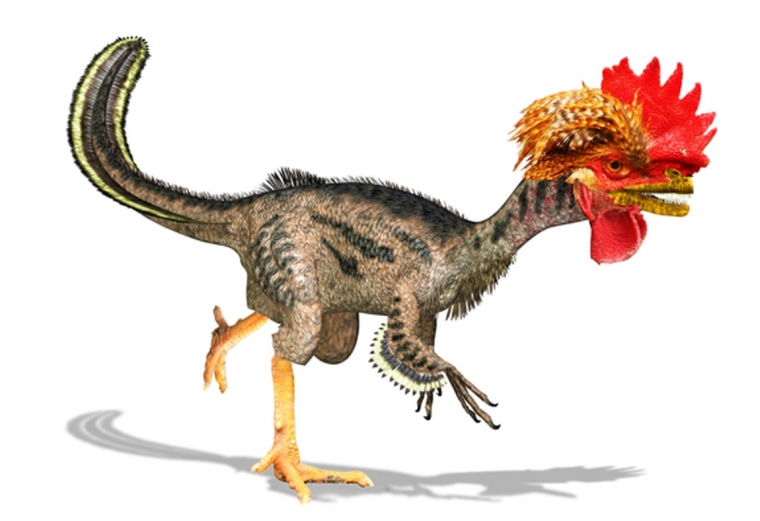Talk of a "chickenosaurus" lit up the science world last week when researchers announced they had modified the beak of a chicken embryo to resemble the snout of its dinosaur ancestors. But turning a beak into a snout is just one of many modifications needed to revert a chicken into a dinosaur.
Given these obstacles, how close are scientists to creating a dino-chicken?
"From a quantitative point of view, we're 50 percent there," said Jack Horner, a professor of paleontology at Montana State University and a curator of paleontology at the Museum of the Rockies. [See Images of the Chicken Embryos with Dinosaur-Like Snouts]

Horner has long supported the idea of modifying a chicken to look like a dinosaur, and unlike the researchers on the latest study, he actually wants to raise a live one. And why stop there? By understanding how and when to modify certain molecular mechanisms, countless changes could be within reach. As Horner pointed out, a glow-in-the-dark unicorn is not out of the question.
There are four major modifications needed to make a so-called chickenosaurus, Horner said. To turn a chicken into a dinosaurlike beast, scientists would have to give it teeth and a long tail, and revert its wings back into arms and hands.
He said the creature would also need a modified mouth — the feat that's the focus of the recently reported study. "This dino-chicken project — we can liken it to the moon project," Horner toldLive Science. "We know we can do it; it's just there are … some huge hurdles."
One of those "huge hurdles" was cleared in the latest study, published May 12 in the journal Evolution, in which researchers turned chicken beaks into dino snouts. But even that seemingly small step involved seven years of work.
Horner and his colleagues are currently working on giving the chicken a long tail— arguably, the most complex part of making a dino-chicken. They just screened genes in mice to determine what types of genetic pathways block tail development. This knowledge could help them figure out how to switch on tail growth, Horner said. [Real or Fake? 8 Bizarre Hybrid Animals]
Horner likened giving a chicken a dinosaurlike tail to breeding a wolf into a Chihuahua, except that it was on an accelerated timescale. "The question is, 'Why would anyone care if they don't care about a Chihuahua?'" he said.
The way Horner sees it, the chickenosaurus is about answering the biggest question of all.
"Any of us that have any curiosity about how we all got here and where everything came from has to be interested in evolutionary biology," Horner said. "It's basically the blueprint of life on this Earth."
This is a condensed version of a report from LiveScience. Read the full report. Follow Laura Geggel on Twitter. Follow LiveScience on Twitter, Facebook and Google+.